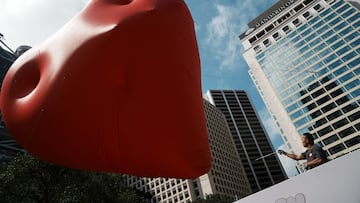What is Valentine’s Day, and why do we celebrate it? The history of the most romantic day of the year
The day was once conceived as part of Christianity breaking with pagan tradition but is now nearly fully secular.

Valentine’s Day is a day to express love and affection towards others, particularly romantic partners. The holiday is named after Saint Valentine, a Catholic priest who lived in the 3rd century.
The exact origins of the holiday and how it became associated with love and romance are not clear, but it is believed that the day was initially a celebration of Saint Valentine and later evolved into a day to recognize and celebrate love in all its forms.
A short history of Valentine’s Day
The celebration of Valentine’s Day is believed to date back to ancient Rome, where a festival called Lupercalia was held in mid-February to venerate fertility and the coming of spring. The festival involved various rituals, including the exchange of love notes which may have been the precursor to the modern practice of exchanging Valentine’s Day cards.
In the 3rd century, the Roman Empire had become a predominantly Christian state and the Church sought to replace pagan festivals with Christian holidays. To this end, the Catholic Church declared 14 February as Saint Valentine’s Day, in honor of a Christian martyr named Valentine who was believed to have been executed on that day.
READ ALSO: Why are roses given as a gift for Valentine’s Day?
Over time, Saint Valentine became associated with love and romance, and the holiday evolved into a day to celebrate romantic love. In the 14th and 15th centuries, the tradition of exchanging love notes on Valentine’s Day became more widespread, and the first Valentine’s Day cards were sent.
READ ALSO: Who was St. Valentine?
The holiday continued to gain popularity and by the 19th century it had become a widely recognized event, celebrated with the exchange of gifts and love notes.






